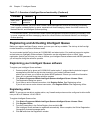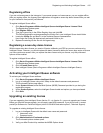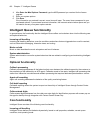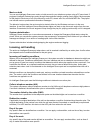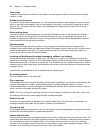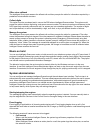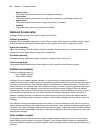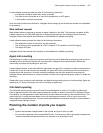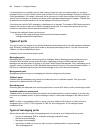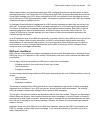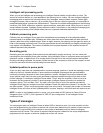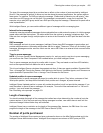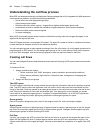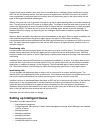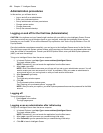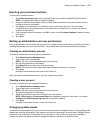422 Chapter 17 Intelligent Queue
It is important that you carefully plan the total number of each port type you require before you configure
Intelligent Queue. Visit the Contact Center Portal on Mitel OnLine to view the Intelligent Queue port sizing tool
(Excel spreadsheet). Port usage is inherently tied to the amount of traffic that the queues will be getting, as
well as from the frequency of updates, and length of the messages played during the updates. The best way
to determine the number required is to use the Intelligent Queue port sizing tool .
If an action plan calls for RAD messaging, a dedicated port is required. The number of RAD ports required is
based on the volume of calls and of distinct messaging sequences. If an action plan requires one-to-one
interaction, the number of ports required is based on volume.
To access the Intelligent Queue port sizing tool
• Browse to http://www.prairiefyre.com/wp-content/rscs/documentation/
IntelligentQueuePortSizingUtility.xls.
Types of ports
The type of port(s) you assign to the call flow determines what happens when the caller presses a telephone
digit. Generally, messaging ports should make up the largest percentage of ports. If you do not have voice
callback, you do not need callback ports.
Intelligent Queue uses several types of ports:
Messaging ports
Messaging ports are used for all incoming calls to Intelligent Queue. Messaging ports provide one-to-one
interaction with the caller through interactive trees, messaging, routing, and taking callback requests.
Messages can be either static or dynamic if you have Contact Center Management. Every messaging port is
dynamic unless it is defined as a RAD (Recorded Announcement Device) on the communications system. A
RAD port is a dedicated port that plays the same message for up to 50 callers simultaneously.
Management ports
Management ports are a type of messaging port used for emergency and prompts.
Callback ports
Callback ports are dedicated ports used for the outbound portion of callback requests. This type of port
executes the callback with the ACD Agent.
Recording ports
Recording ports are dedicated ports used by supervisors to record ACD calls for quality monitoring purposes.
Updated position in queue ports
Updated position in queue ports are ports used for the Updated position in queue message. A port can play
more than one updated position in queue message, however, it sends that message to one caller at a time
only.
NOTE: In order to use Updated position in queue, you must enable all HCI options on Class of Service
Assignment form 1 (COS 1). See "Appendix A 3300 ICP port configuration" in the Intelligent Queue
Installation Guide.
Types of messaging ports
Several factors affect the number of messaging ports you require for your Intelligent Queue system:
• the type of messaging: RAD or intelligent messaging (interactive trees)
• the nature of the message
• the length of the message
• the number of callers to whom you want to play an Updated position in queue message
RAD messaging ports



